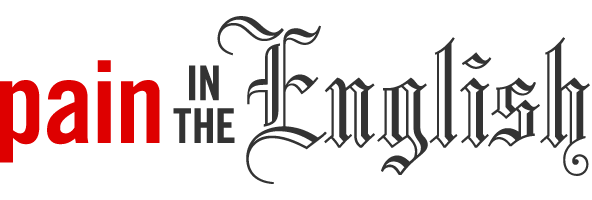Username
masrowan
Member Since
January 8, 2010
Total number of comments
22
Total number of votes received
21
Bio
Latest Comments
“This is she” vs. “This is her”
- January 8, 2010, 1:06pm
Totally and completely incorrect! Objects of the sentence/verb follow action verbs [mailed,talk,thought, did], not linking verbs [is, are, was]. The object of the verb answers the question "who" or what" after the verb. "She mailed the letter." "She mailed what?" The letter = the object. The object receives the action of the verb. When a pronoun follows a linking verb as in, "It is she," the verb is a linking verb, so the pronoun that follows is a predicate nominative. You need to be able to turn the sentence around, to wit: "It is she," and "She is it." If one says, "It is her," "Her is it" isn't going to fly. Now I admit that in common speech, most people say, "It is her." Totally correct and preferable speech is an ever more rare thing, for example, the use of the disappearing subjunctive. When incorrect speech has been around long enough, we tend to think it "correct"; whereas, it is simply accepted as such. "It is she" is formal, completely correct, and, therefore, standard English. Check a grammar text on line should you doubt this.





“This is she” vs. “This is her”
Hmmmmm! Well, yes. The distinctions are or were at their formation, indeed, arbitrary; nonetheless, to say they make "no difference AT All," isn't quite true. Language, after all, is simply a convention in which we all agree to say the same thing in more or less the same way to promote understanding and clarity of communication. If I were to call a pencil a Fred, you might think I was a bit strange, and you might be right; however, if I did it long enough and consistently enough, you'd know what I meant when I said I needed a Fred. That's as opposed to my pen, here and after known as my Ethel. But back to the initial question -- the "This is she" vs "This is her." The whole discussion, as I understood it, was one of what is grammatically correct/standard English, as is tested by such instruments as the SAT, ACT, GRE, and so forth, not that such tests are the foundations upon which the universe rests. There are rules for what is termed standard English. Less erudite forms of speech still get the job done, but totally correct, as defined by the grammar books, they are not. That this isn't needed in all cases is very true. "This is she" is now considered colloquial, and "I be Jimmy" is considered simply "substandard," though there are many folks who speak in such a fashion. And I admit it: I have no trouble understanding, "I be Jimmy." It's not "incorrect" to say, "This is her" on the phone. One can speak as one chooses. The rule of what pronoun follows what sort of verb has only to do with what one says if totally standard English is the currency in that exchange. I had thought that the initial subject of the question was precisely that, not whether or not we're allowed to use colloquial speech. It's back to Fred and Ethel. Why must a triangle be a figure three sides and three angles? The answer is the same as to why it's, "This is she." The answer is because, just that -- because. At some point the powers that be came down upon that distinction. It was not I, but others. I have no problem with colloquial speech. But in an academic discussion of what is grammatically correct, I stand not on my opinion but upon that of Warriner's, Strunk and White, and other such authorities.
p.s. I'm confused by the "hobknobbery" remark and how it fits into the discussion. "Hobnobbery" is to associate with others in a familiar manner, to "hang around" with others.